Amidst a global revival of interest in vintage crockery, your grandmother’s teapots may be more valuable than ever before
Amidst a global revival of interest in vintage crockery, your grandmother’s teapots may be more valuable than ever before
Adrian D’Cruz and his wife Althea hold their family’s memories in their dinner sets. Photographs do their job, but it is when Althea looks at the heirloom crockery that she remembers her mother-in-law, Jossie D’Cruz, who was “a great giver of parties”. Part of what made the parties special was her pretty porcelain.
From Adrian D’Cruz’s vintage crockery collection in Fort Kochi
| Photo Credit: THULASI KAKKAT
Retired senior shipping executive Adrian and Althea have preserved the heirlooms in mint condition, taking them out only on very rare occasions. For instance, the last time they used it was when Adrian’s extended family got together in Fort Kochi, where Adrian lives, 10 years ago.
One is a Kutani (traditional Japanese porcelain) hand-painted set for six in white and silver, about 80 to 100 years old. The other is a white and gold set with bamboo prints. “We inherited this particular set for eight from my father’s family and it is definitely over 70 years old. It only has a Chinese inscription and I don’t know where it is from,” says Adrian.
For inheritors of vintage crockery, it is a tangible slice of family history — something that brings back warm, fuzzy memories of lively dinners or a favourite grandparent who loved his or her tea in the special bone china cup.
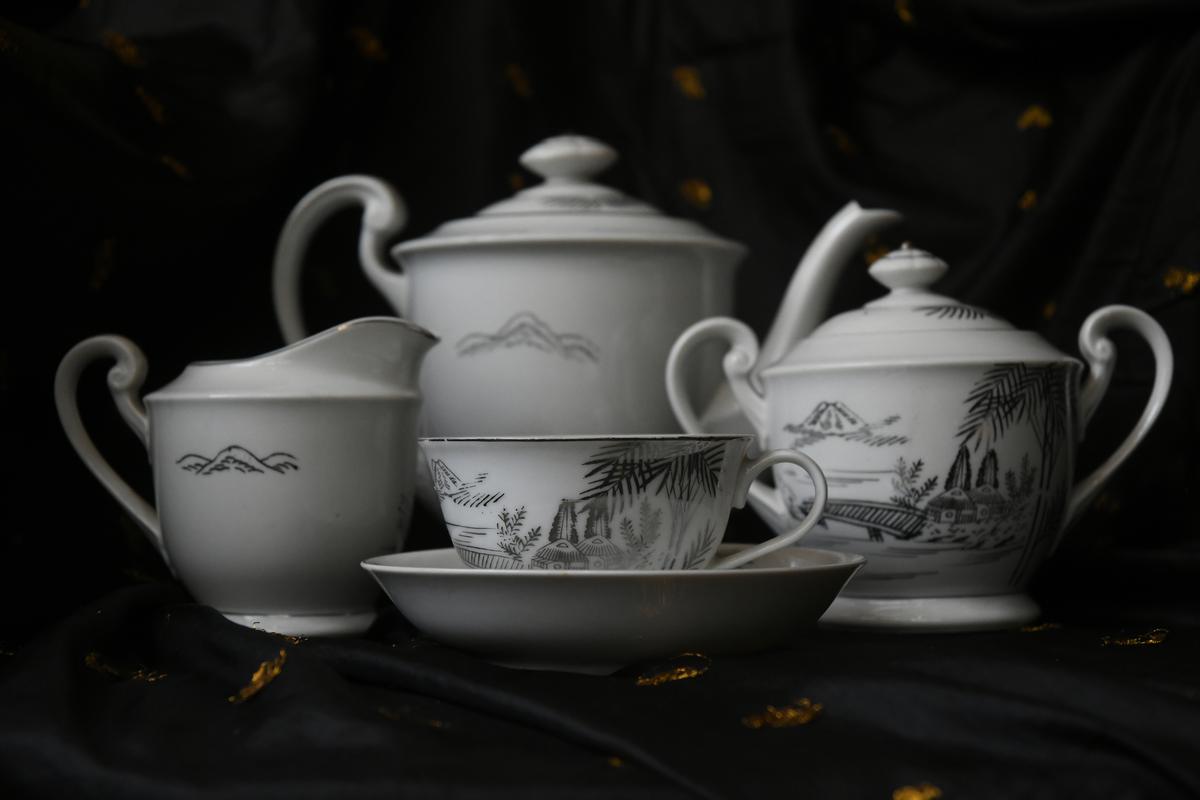
Adrian D’Cruz’s vintage tea set
| Photo Credit: THULASI KAKKAT
There has been a growing interest in vintage tableware, especially in the past year, says Dayna Isom Johnson, Trend Expert at Etsy, which has over 44,000 vintage dinnerware listings to date. “Shoppers have been gravitating towards nostalgic pieces and accents that are reminiscent of decades past. We’re seeing a return to all things retro and this year, shoppers are focussing on self-expression with many turning to vintage items as a sustainable alternative that adds character to their spaces while spotlighting their personal style,” she adds.
Popular Blue Willow
For new collectors, Blue Willow china holds special charm. Believed to have been developed in 1779 in England, the design is said to have taken British tea tables by storm. The crockery had motifs of a weeping willow, pagodas, three men on a bridge and a pair of swallows. In blue and white, these were said to be inspired by Chinese crockery. Today, these are popular on various e-commerce sites selling vintage collectibles. A blue willow teapot, creamer, and sugar bowl set of 1910-1920 vintage can cost up to ₹14,374 (on Etsy), while a rare English antique ceramic tea set, made in England by Spode Copeland in the 1890s, with an Imari pattern, is available for ₹1,28,556.
Value your ceramics
Sotheby’s, one of the largest brokers of fine art, jewellery, and collectibles, can tell you how much your object is worth and offers guidance on how to sell it. The prospective seller just needs to submit photographs of the objects along with the basic information and a team of specialists will value the free of cost. www.sothebys.com
Food consultant, and author of multiple books on Anglo-Indian cuisine, Bridget White Kumar in Bengaluru treasures the Blue Willow crockery that she inherited from her mother. Containing sandwich plates, elongated platters with curly edges and gold piping, soup plates, a teapot and more, the 86-piece dinner set (Royal Doulton’s Will O’the Wisp) was part of her mother’s trousseau, which was divided between Bridget and her siblings when they got married. “I don’t know the exact year of manufacture, but I am sure these pieces would be at least over 100 years,” she says. While some have browned over the years, some are still as good as new, decorating her crockery cupboard.
Born and raised in the Kolar Gold Fields, Bridget (69) reckons it was bought in the early 1950s, when foreign good were prized. She rarely uses them as she cannot bear to see them chipped or broken: instead she has converted some into wall decor. “Also, who is entertaining these days? After COVID-19, we have stopped visiting and receiving guests altogether. For me, these are part of precious memories of my mother,” she says.
A museum of memories
Betty Karunakaran, founder of the Revi Karuna Karan Museum in Alappuzha, Kerala, converted her love for vintage crockery into art. A collector of fine antiques from around the world, Betty’s exhaustive collection of porcelain, is now part of the exhibits at the museum, which she built in memory of her husband, a coir exporter and former director of Industrial Development Bank of India, in 2006.
While she inherited heirlooms collected over generations by Revi’s family, Betty herself had an eye for all things unique and pretty. She picked up rare collectibles from all over the world. “I have got delicately-coloured Dresden china, ornate Meissen from Germany, considered one of the finest of porcelain, Herend from Hungary and English fine-china Wedgwood to mention a few. They don’t make these anymore. While I have used some of them for family dinners, others have just been preserved as show pieces,” says Betty. Her vintage crockery collection includes Capo di Monte and Armani from Italy, Lladró from Spain, Noritake from Japan, Limoges from France, and Delft from Holland.
For the stories
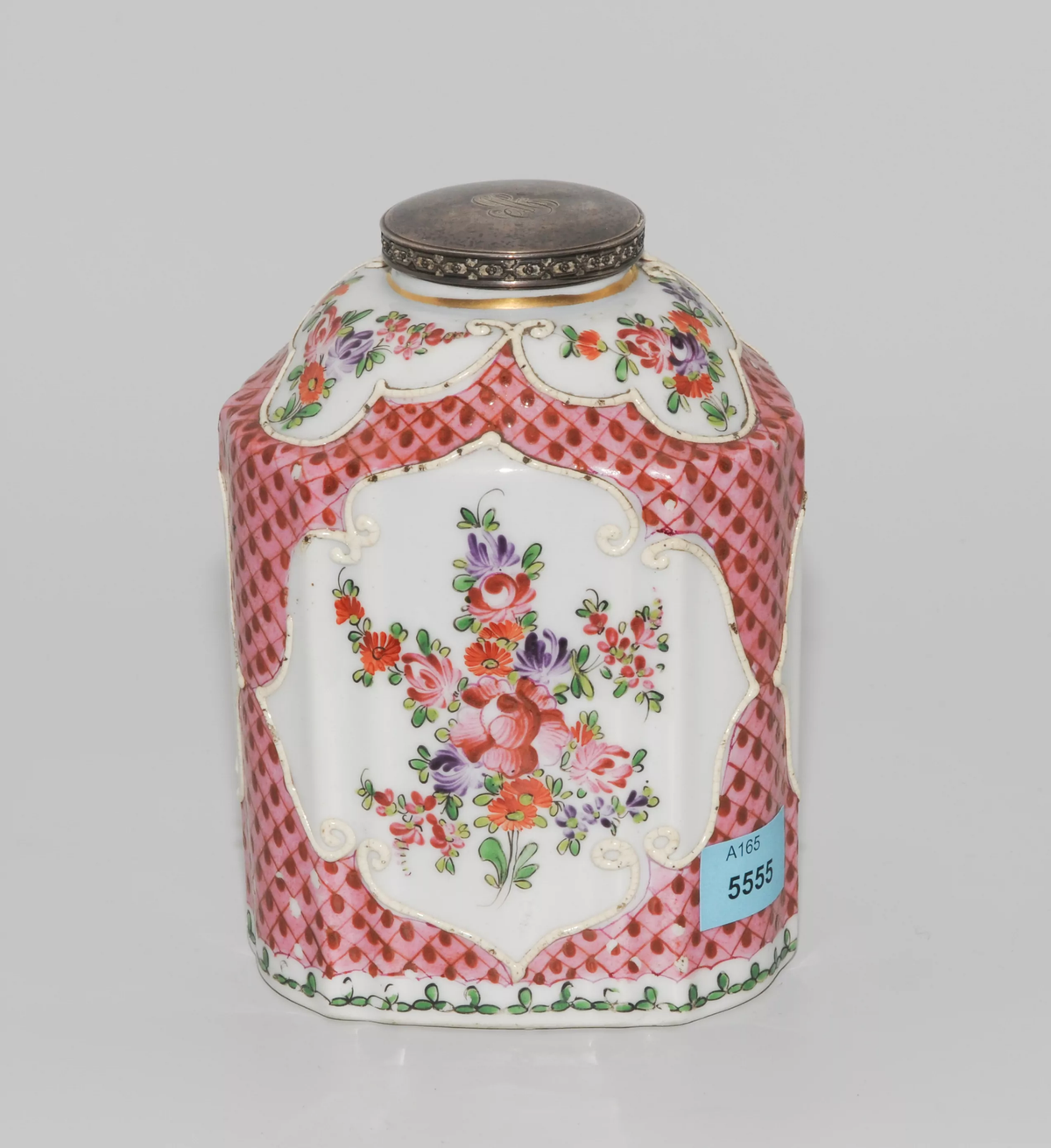
Thomas Kuriyan’s vintage tea caddie
| Photo Credit: Thomas Kuriyan
Thomas Kuriyan’s house in Switzerland is a veritable museum of antiques. With a collection of over 500 Fore Edge antiquarian books, hundreds of pieces of silverware, crystal ware, cutlery, bookmarks and other antique collectibles, Thomas believes the beauty of these objects is one thing, but their stories are what endears them to him. “I don’t just pick up stuff, I try to unearth at least some of their stories as well,” says Thomas whose collection includes a few ornamental porcelain tea caddies by Meissen, Nymphenburg, Bavaria Selb and Rosenthal.
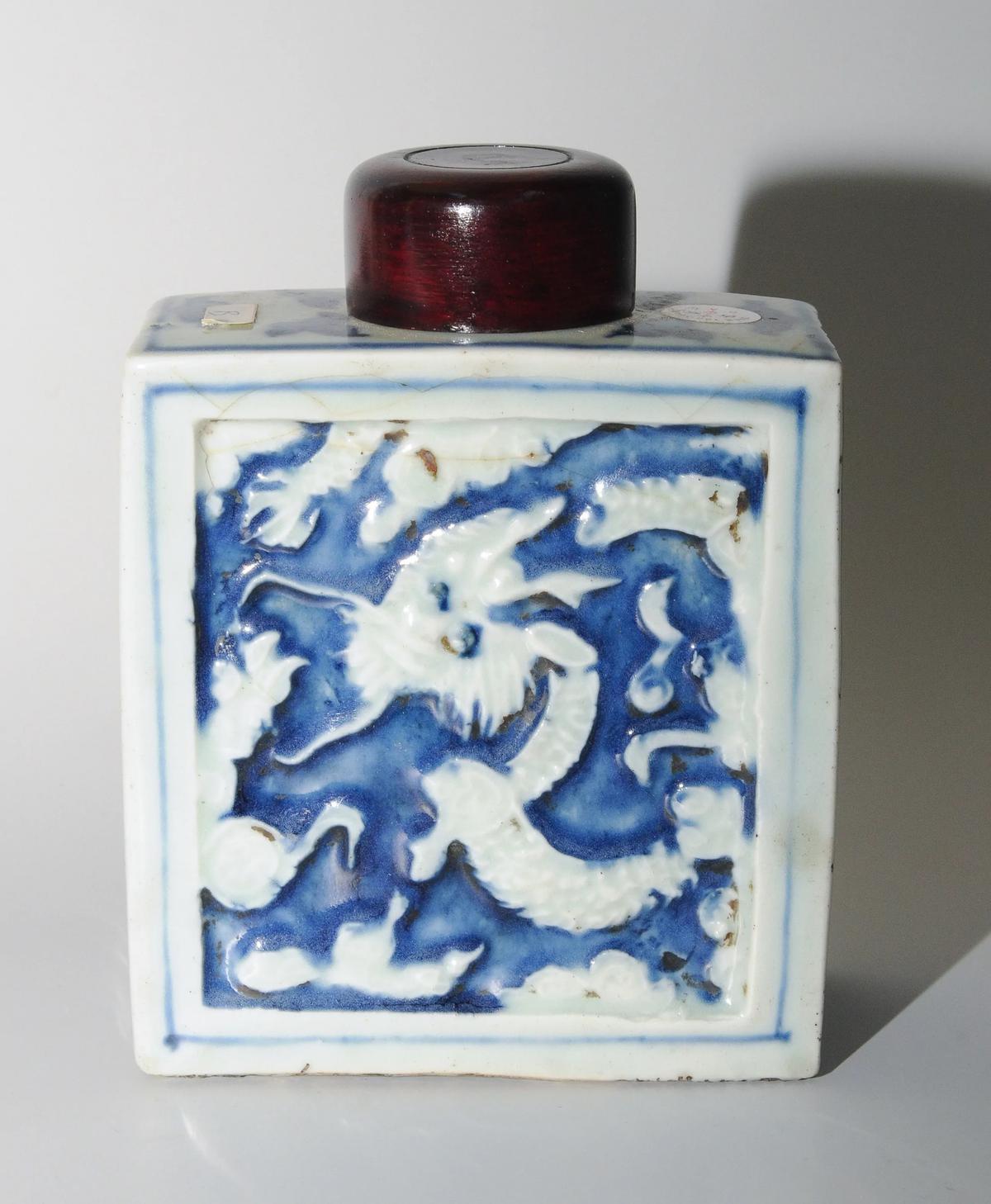
Thomas Kuriyan’s vintage tea caddie
| Photo Credit: Thomas Kuriyan
“Tea and sugar were expensive in the 18th to 20th centuries and only the wealthy could afford it. The vessels (tea caddies and sugar bowls) used to store them were made of the most expensive materials at that time. Porcelain, which was called white gold, silver, ivory, and exotic woods such as mahogany and ebony were used,” he says. Thomas goes to auctions all over the world to look for things that interest him. “Old porcelain is very valued. The older the crockery, the more exponential the price. For instance, a tea saucer made in the 1700s can cost anywhere between $3,000 (over ₹2lakh) to $5,000 (close to ₹4 lakh),” he says.
Teacups of joy
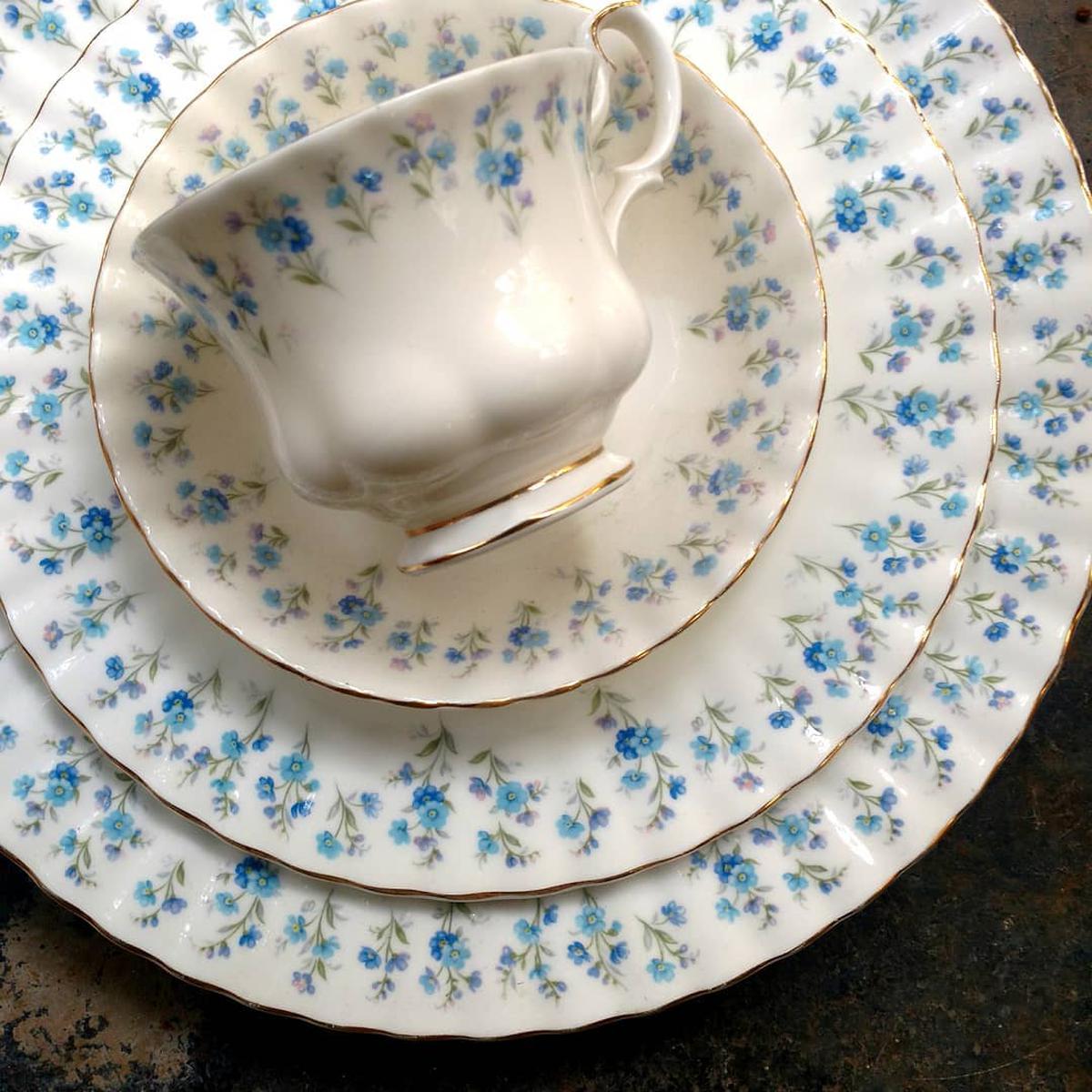
Rhea Mitra Dalal’s Royal Albert ‘Memory Lane’ collection
| Photo Credit: Rhea Mitra Dalal
Archaeologist, caterer (Euphorhea Kitchen) and writer Rhea Mitra Dalal, who lives in Mumbai, believes that the best way to pay tribute to the ancestry of these pieces is to use them. She uses her pale blue Noritake dinner sets bequeathed to her by her mother-in-law. She also treasures a Royal Albert dinner set that her father bought her mother on his first trip abroad — a four place setting with a dainty blue flower pattern known as ‘memory lane’. “My mom never used it and saved it for me and I insist on it being used and deriving joy out of it,” says Rhea, who also has in her collection, square snack plates, slightly discoloured, from the 1960s, that her aunt had in the back of her cupboard. “These were manufactured by the New Hall Pottery Company, an English company of the 1900s. These plates, were given away as freebies by Brooke Bond with their products. People collected these plates and there could be people pan India, who still have these,” says Rhea.
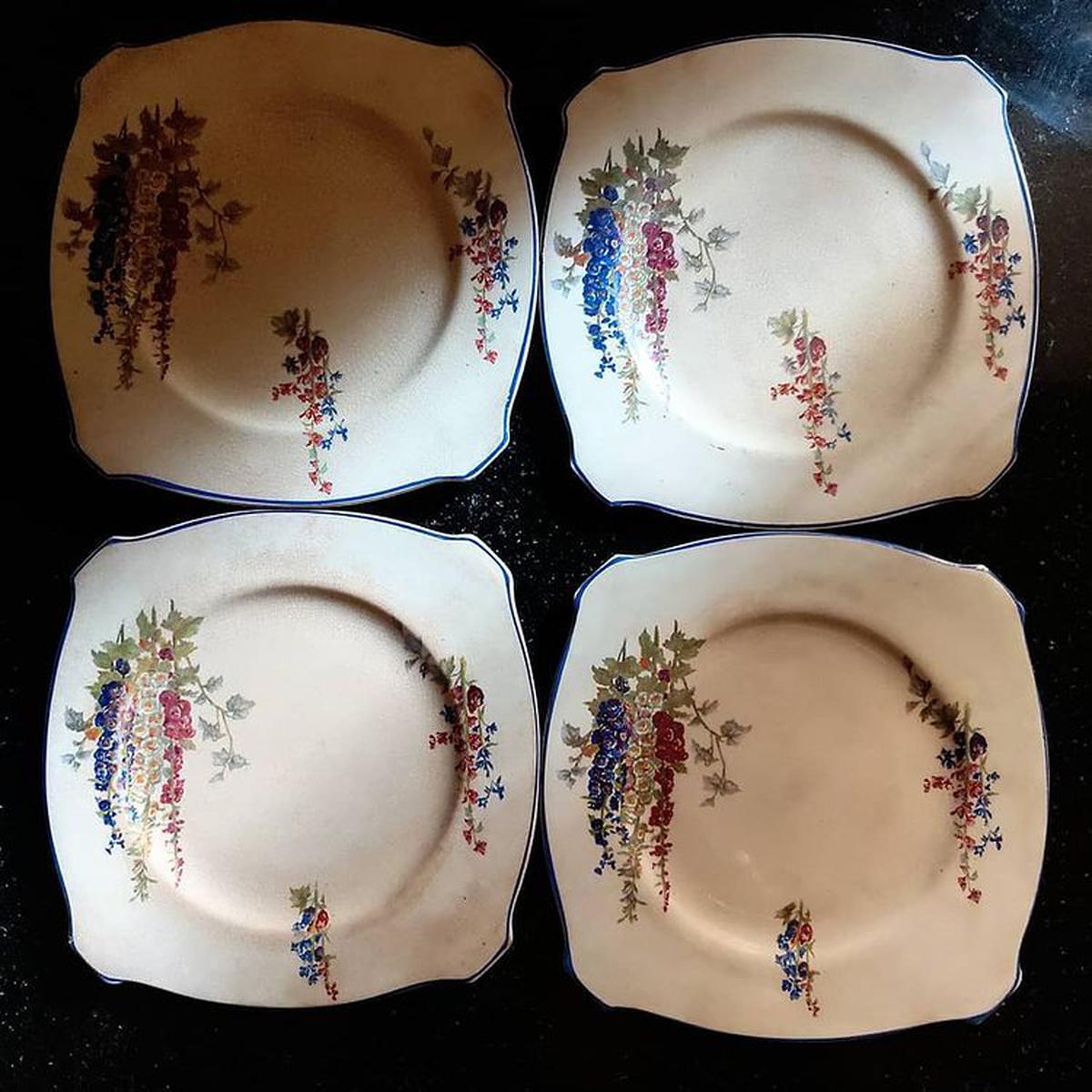
From Rhea Mitra Dalal’s vintage crockery collection
| Photo Credit: Special Arrangement
Renuka Krishnakumar from Thiruvananthapuram has a set of six cups and saucers in bone china that her grandfather brought home from England, where he had gone to study in the early 1900s. The hand-painted set, easily over a 100 years old, has become as fragile as eggshells and are rarely taken out. “However, I remember them gracing our childhood tea times,” says Renuka, who works with Emirates Airlines.
From Ronak Shah’s ‘Variety of Life’ vintage set from Corelle
| Photo Credit: Ronak Shah
Ever since the pandemic began, it is clear that people have started valuing family and family heirlooms more than ever before. “Instead of hoarding, we began to use our old china, and appreciate it anew,” says Ronak Shah, an advertising professional in Mumbai, who says he “re-discovered” the Variety of Life vintage set from Corelle.
From Ronak Shah’s Variety of Life Corelle vintage set
| Photo Credit: Ronak Shah
The pieces from the late 1970s had come to him when the joint family broke up into smaller units. Ronak uses the dishes for baking. With pictures of vegetables, the pieces from the set have French words written on them. “There is something sentimental about cooking my favourite peach crumble in this old dish,” says Ronak adding “I would love to pass it on to my kids.”
Wisteria love
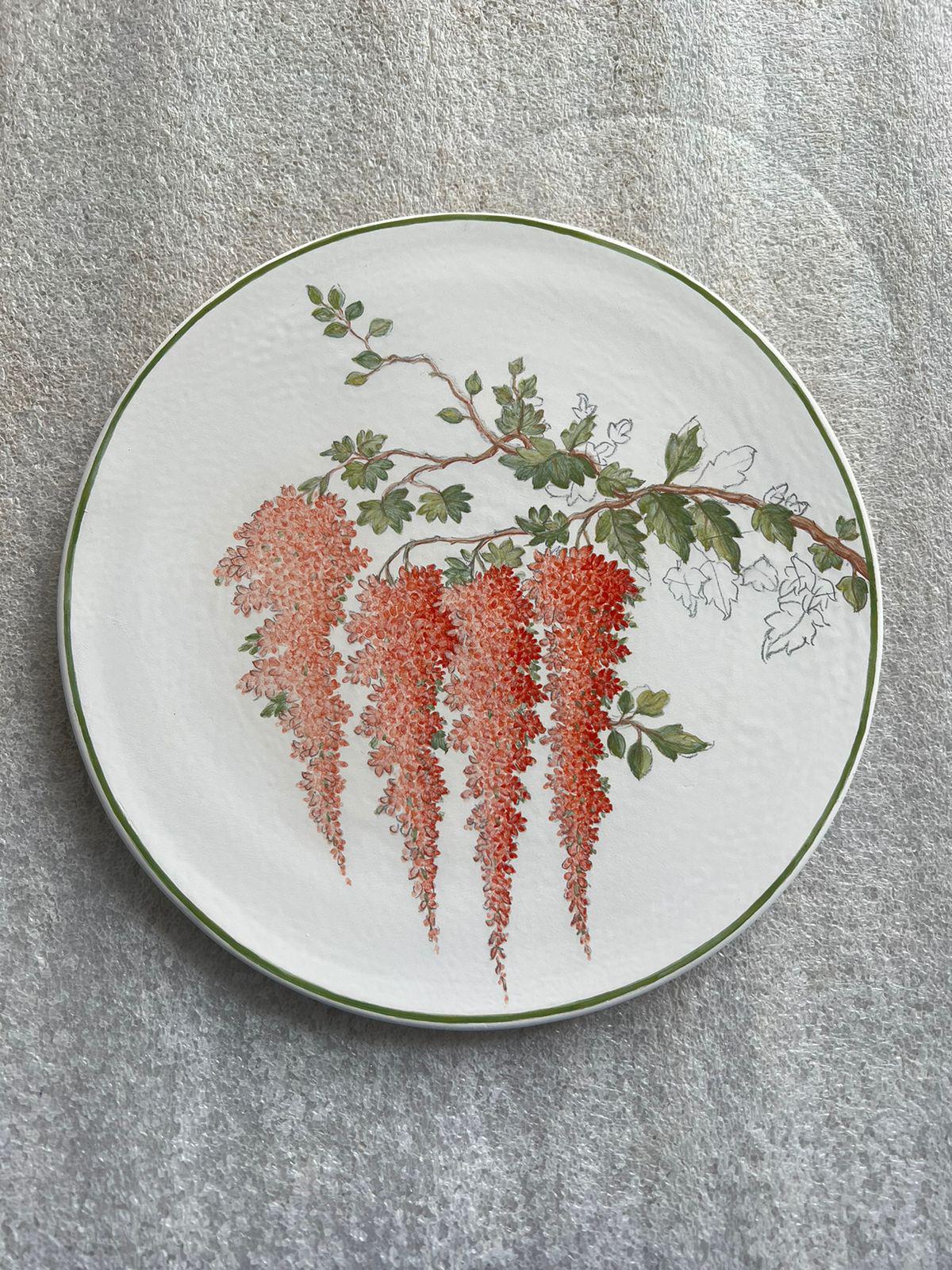
From Chef Tejasvi Chandela’s ‘Wisteria’ collection
| Photo Credit: Special Arrangement
Inspired by her love for vintage crockery, Chef Tejasvi Chandela is launching a Wisteria Collection on September 1 at her patisserie, Dzurt, in Jaipur. An ode to the purple blooms, the collection includes crockery, table runners and decor done in various shades of an English summer. Cups and dessert plates have hand-painted motifs of wisteria done by miniature artists. “My family and I have been hoarders of vintage crockery. I especially love wisteria, which is so evocative of the English summer. I have inherited heirloom crockery from my husband’s family as well as my from my mother; Wedgwood plates and cake stands, for instance. The collection is a reflection of this vintage love,” she says.
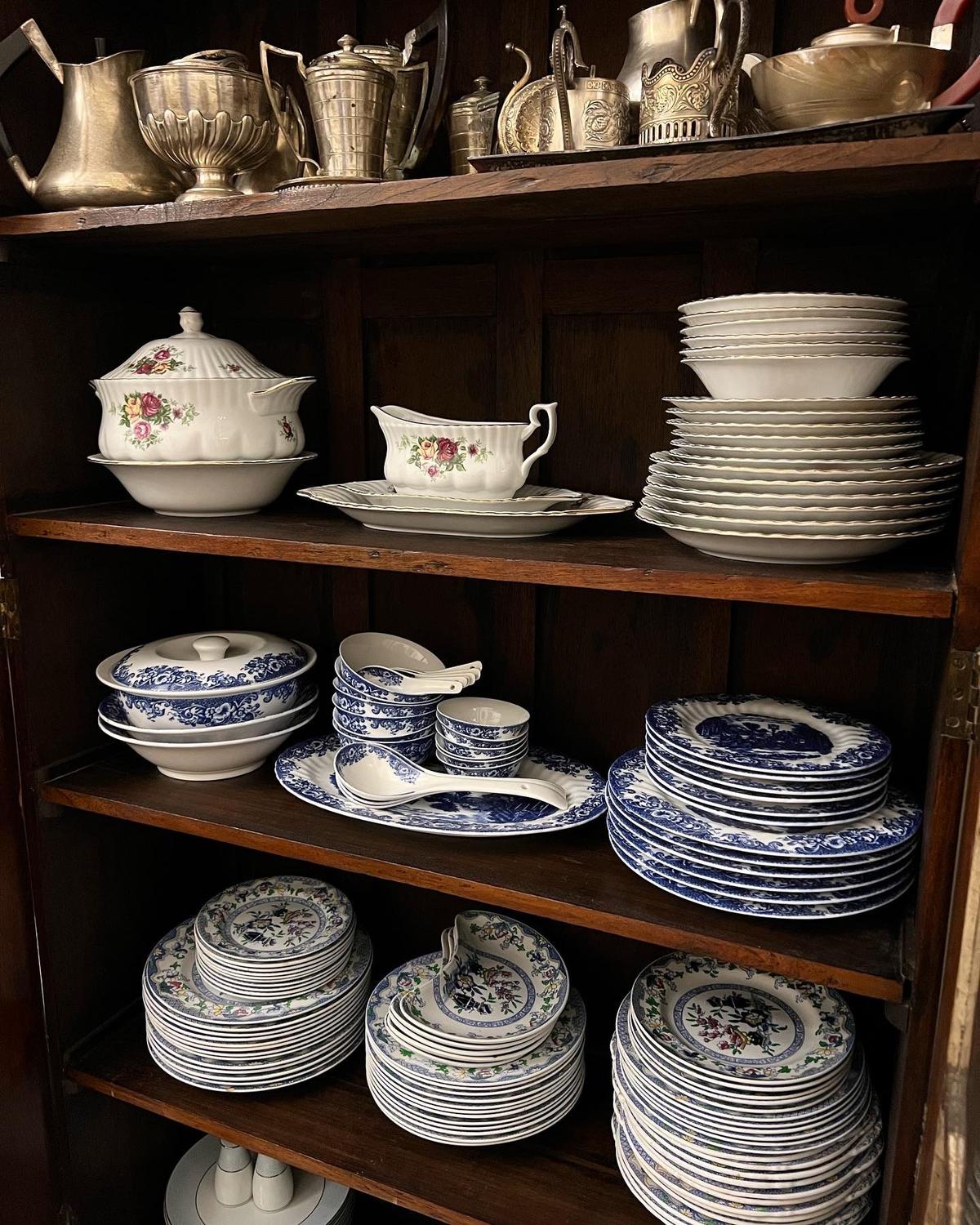
Chef Tejasvi Chandela’s personal collection of vintage crockery and a plate from her ‘Wisteria’ collection
| Photo Credit: Special Arrangement
Diasporic sheen
Though delicate porcelain has its fans, the legacy of vintage enamelware is equally historic. Many Chettiar households still retain vast collections of these dishes that their ancestors brought back from their business travels to Europe. Sethulakshmi Subramanian, a Waldorf teacher from Karaikudi now settled in Chennai, has a collection of vividly coloured enamelware that she inherited from her family.
“There was a huge population of Chettiars who lived in Burma, which was a British colony. During 1860-1940, there was a mass exodus of the Chettiars from Burma. These people brought back all their belongings, of which enamelware was a big part,” Sethulakshmi says. The ones that remain from that period are mainly those made in Austria, Sweden and England. “They are made of cast iron, coated with powdered glass and enamel paint. They can be used to cook and are ideal to store milk, curd, batter and pickles. However, one has to be careful with vintage enamelware as it tends to chip and break,” adds Sethulakshmi.
What vintage crockery have you inherited and stashed away? Send a picture to @thehinduweekend.
























